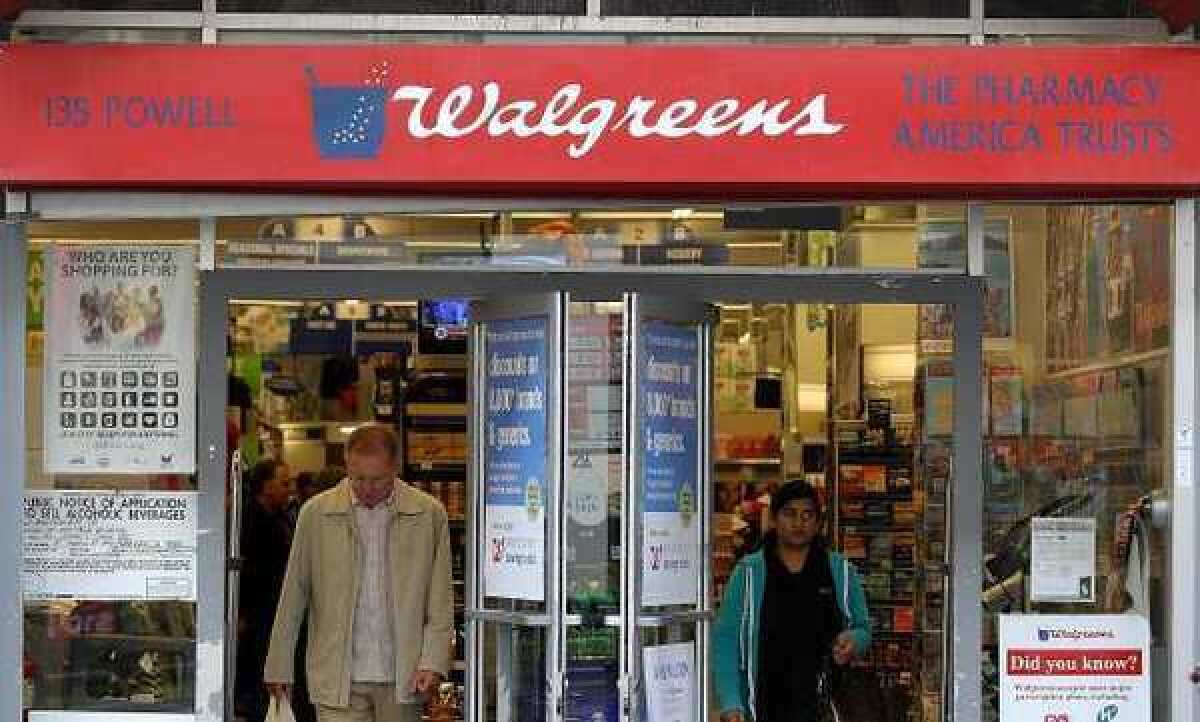Walgreen’s buying spree: Pharmacy chain acquired for $438 million

Walgreen Co.’s sales have been weak, but that’s not stopping the country’s largest drugstore chain from making a major push to expand, most recently with its $438-million purchase of the USA Drug pharmacy chain.
The purchase from Stephen L. LaFrance Holdings Inc., majority owner of USA Drug and brands such as Super D Drug and May’s Drug, is being structured as a stock deal and must first be approved by regulators.
But if the arrangement closes as planned in early September, Walgreens will end up with 144 stores scattered across states including Arkansas, Kansas, Mississippi, Missouri, New Jersey, Oklahoma and Tennessee.
The drugstores will keep their current names for now, though “decisions will be made over time regarding the best, most effective way to harmonize Walgreens and the acquired brands,” according to a statement from the companies.
With the USA Drug business in the bag, Walgreen can grow into smaller communities that last year earned LaFrance $825 million in revenue.
Deerfield, Ill.-based Walgreen is also trying to develop a presence abroad, buying a 45% stake in European pharmaceutical giant Alliance Boots last month for $6.7 billion.
The string of deals comes as Walgreens tries to boost its sales, which dipped 6.8% in June to $5.6 billion from $6 billion a year earlier amid declining customer traffic and more new generic drugs.
As of June 30, Walgreens operated 8,359 locations across the U.S., in Puerto Rico and in Guam. On Thursday, the company’s stock inched up 0.6%, or 18 cents, to $29.80 a share in late morning trading in New York.
ALSO:
Walgreen to buy Drugstore.com for $429 million
Express Scripts closes $29.1-billion purchase of Medco
How Big Pharma distorts the costs of developing new drugs
Walgreen pays $6.7 billion for Boots stake as sales fall, stock wavers
Follow Tiffany Hsu on Twitter and Google+
More to Read
Inside the business of entertainment
The Wide Shot brings you news, analysis and insights on everything from streaming wars to production — and what it all means for the future.
You may occasionally receive promotional content from the Los Angeles Times.











